
- Subject:
- Mathematics
- Material Type:
- Full Course
- Provider:
- Pearson
- Date Added:
- 10/06/2016


Fractions and Decimals
Type of Unit: Concept
Prior Knowledge
Students should be able to:
Multiply and divide whole numbers and decimals.
Multiply a fraction by a whole number.
Multiply a fraction by another fraction.
Write fractions in equivalent forms, including converting between improper fractions and mixed numbers.
Understand the meaning and structure of decimal numbers.
Lesson Flow
This unit extends students’ learning from Grade 5 about operations with fractions and decimals.
The first lesson informally introduces the idea of dividing a fraction by a fraction. Students are challenged to figure out how many times a 14-cup measuring cup must be filled to measure the ingredients in a recipe. Students use a variety of methods, including adding 14 repeatedly until the sum is the desired amount, and drawing a model. In Lesson 2, students focus on dividing a fraction by a whole number. They make a model of the fraction—an area model, bar model, number line, or some other model—and then divide the model into whole numbers of groups. Students also work without a model by looking at the inverse relationship between division and multiplication. Students explore methods for dividing a whole number by a fraction in Lesson 3, for dividing a fraction by a unit fraction in Lesson 4, and for dividing a fraction by another fraction in Lesson 6. Students examine several methods and models for solving such problems, and use models to solve similar problems.
Students apply their learning to real-world contexts in Lesson 6 as they solve word problems that require dividing and multiplying mixed numbers. Lesson 7 is a Gallery lesson in which students choose from a number of problems that reinforce their learning from the previous lessons.
Students review the standard long-division algorithm for dividing whole numbers in Lesson 8. They discuss the different ways that an answer to a whole number division problem can be expressed (as a whole number plus a remainder, as a mixed number, or as a decimal). Students then solve a series of real-world problems that require the same whole number division operation, but have different answers because of how the remainder is interpreted.
Students focus on decimal operations in Lessons 9 and 10. In Lesson 9, they review addition, subtraction, multiplication, and division with decimals. They solve decimal problems using mental math, and then work on a card sort activity in which they must match problems with diagram and solution cards. In Lesson 10, students review the algorithms for the four basic decimal operations, and use estimation or other methods to place the decimal points in products and quotients. They solve multistep word problems involving decimal operations.
In Lesson 11, students explore whether multiplication always results in a greater number and whether division always results in a smaller number. They work on a Self Check problem in which they apply what they have learned to a real-world problem. Students consolidate their learning in Lesson 12 by critiquing and improving their work on the Self Check problem from the previous lesson. The unit ends with a second set of Gallery problems that students complete over two lessons.

Students solve decimal multiplication and division problems related to the basic fact 3 × 7 = 21.Students match cards that represent word problems, visual models, and numerical solutions to problems that include the numbers 0.8 and 0.2 for all four operations.Key ConceptsNo new mathematics is introduced in this lesson. Students apply their knowledge about decimal operations.Goals and Learning ObjectivesUse reasoning and mental math to solve problems.Solve word problems involving simple addition, subtraction, multiplication, and division with decimals.

Students critique and improve their work on the Self Check.Key ConceptsNo new concepts are introduced in this lesson. To solve the problems in the Self Check, students use fraction division and operations with decimals.Goals and Learning ObjectivesUse knowledge of fraction division and decimal operations to solve problems.

Students use estimation or other methods to place the decimal points in products and quotients. They review the algorithms for the four basic decimal operations and solve multistep word problems involving decimal operations.Key ConceptsThe algorithms for whole-number operations can be extended to decimal operations. Students learned the algorithms for decimal operations in Grade 5. By the end of Grade 6, they should be fluent with these operations.For decimal addition and subtraction, once the decimal points of the addends are aligned (which aligns like place values), the algorithms are the same as for whole numbers. The decimal point in the sum or difference goes directly below the decimal point in the numbers that were added or subtracted.For decimal multiplication and division, one method is to ignore the decimal points and apply the whole-number algorithms. Then use estimation or some other method to place the decimal point in the answer.Goals and Learning ObjectivesReview and practice the algorithms for all four decimal operations.Solve real-world problems involving decimal operations.

Four full-year digital course, built from the ground up and fully-aligned to the Common Core State Standards, for 7th grade Mathematics. Created using research-based approaches to teaching and learning, the Open Access Common Core Course for Mathematics is designed with student-centered learning in mind, including activities for students to develop valuable 21st century skills and academic mindset.

Proportional Relationships
Type of Unit: Concept
Prior Knowledge
Students should be able to:
Understand what a rate and ratio are.
Make a ratio table.
Make a graph using values from a ratio table.
Lesson Flow
Students start the unit by predicting what will happen in certain situations. They intuitively discover they can predict the situations that are proportional and might have a hard time predicting the ones that are not. In Lessons 2–4, students use the same three situations to explore proportional relationships. Two of the relationships are proportional and one is not. They look at these situations in tables, equations, and graphs. After Lesson 4, students realize a proportional relationship is represented on a graph as a straight line that passes through the origin. In Lesson 5, they look at straight lines that do not represent a proportional relationship. Lesson 6 focuses on the idea of how a proportion that they solved in sixth grade relates to a proportional relationship. They follow that by looking at rates expressed as fractions, finding the unit rate (the constant of proportionality), and then using the constant of proportionality to solve a problem. In Lesson 8, students fine-tune their definition of proportional relationship by looking at situations and determining if they represent proportional relationships and justifying their reasoning. They then apply what they have learned to a situation about flags and stars and extend that thinking to comparing two prices—examining the equations and the graphs. The Putting It Together lesson has them solve two problems and then critique other student work.
Gallery 1 provides students with additional proportional relationship problems.
The second part of the unit works with percents. First, percents are tied to proportional relationships, and then students examine percent situations as formulas, graphs, and tables. They then move to a new context—salary increase—and see the similarities with sales taxes. Next, students explore percent decrease, and then they analyze inaccurate statements involving percents, explaining why the statements are incorrect. Students end this sequence of lessons with a formative assessment that focuses on percent increase and percent decrease and ties it to decimals.
Students have ample opportunities to check, deepen, and apply their understanding of proportional relationships, including percents, with the selection of problems in Gallery 2.

Students determine whether a relationship between two quantities that vary is a proportional relationship in three different situations: the relationship between the dimensions of the actual Empire State Building and a miniature model of the building; the relationship between the distance and time to travel to an amusement park; and the relationship between time and temperature at an amusement park.Key ConceptsWhen the ratio between two varying quantities remains constant, the relationship between the two quantities is called a proportional relationship. For a ratio A:B, the proportional relationship can be described as the collection of ratios equivalent to A:B, or cA:cB, where c is positive.Goals and Learning ObjectivesIdentify proportional relationships.Explain why a situation represents a proportional relationship or why it does not.Determine missing values in a table of quantities based on a proportional relationship.

Samples and ProbabilityType of Unit: ConceptualPrior KnowledgeStudents should be able to:Understand the concept of a ratio.Write ratios as percents.Describe data using measures of center.Display and interpret data in dot plots, histograms, and box plots.Lesson FlowStudents begin to think about probability by considering the relative likelihood of familiar events on the continuum between impossible and certain. Students begin to formalize this understanding of probability. They are introduced to the concept of probability as a measure of likelihood, and how to calculate probability of equally likely events using a ratio. The terms (impossible, certain, etc.) are given numerical values. Next, students compare expected results to actual results by calculating the probability of an event and conducting an experiment. Students explore the probability of outcomes that are not equally likely. They collect data to estimate the experimental probabilities. They use ratio and proportion to predict results for a large number of trials. Students learn about compound events. They use tree diagrams, tables, and systematic lists as tools to find the sample space. They determine the theoretical probability of first independent, and then dependent events. In Lesson 10 students identify a question to investigate for a unit project and submit a proposal. They then complete a Self Check. In Lesson 11, students review the results of the Self Check, solve a related problem, and take a Quiz.Students are introduced to the concept of sampling as a method of determining characteristics of a population. They consider how a sample can be random or biased, and think about methods for randomly sampling a population to ensure that it is representative. In Lesson 13, students collect and analyze data for their unit project. Students begin to apply their knowledge of statistics learned in sixth grade. They determine the typical class score from a sample of the population, and reason about the representativeness of the sample. Then, students begin to develop intuition about appropriate sample size by conducting an experiment. They compare different sample sizes, and decide whether increasing the sample size improves the results. In Lesson 16 and Lesson 17, students compare two data sets using any tools they wish. Students will be reminded of Mean Average Deviation (MAD), which will be a useful tool in this situation. Students complete another Self Check, review the results of their Self Check, and solve additional problems. The unit ends with three days for students to work on Gallery problems, possibly using one of the days to complete their project or get help on their project if needed, two days for students to present their unit projects to the class, and one day for the End of Unit Assessment.

Students begin to formalize their understanding of probability. They are introduced to the concept of probability as a measure of likelihood and how to calculate probability as a ratio. The terms discussed (impossible, certain, etc.) in Lesson 1 are given numerical values.Key ConceptsStudents will think of probability as a ratio; it can be written as a fraction, decimal, or a percent ranging from 0 to 1.Students will think about ratio and proportion to predict results.Goals and Learning ObjectivesDefine probability as a measure of likelihood and the ratio of favorable outcomes to the total number of outcomes for an event.Predict results based on theoretical probability using ratio and proportion.

Working With Rational Numbers
Type of Unit: Concept
Prior Knowledge
Students should be able to:
Compare and order positive and negative numbers and place them on a number line.
Understand the concepts of opposites absolute value.
Lesson Flow
The unit begins with students using a balloon model to informally explore adding and subtracting integers. With the model, adding or removing heat represents adding or subtracting positive integers, and adding or removing weight represents adding or subtracting negative integers.
Students then move from the balloon model to a number line model for adding and subtracting integers, eventually extending the addition and subtraction rules from integers to all rational numbers. Number lines and multiplication patterns are used to find products of rational numbers. The relationship between multiplication and division is used to understand how to divide rational numbers. Properties of addition are briefly reviewed, then used to prove rules for addition, subtraction, multiplication, and division.
This unit includes problems with real-world contexts, formative assessment lessons, and Gallery problems.

Lesson OverviewStudents learn the definition of rational number, and they write rational numbers as ratios of integers and as repeating or terminating decimals.Key ConceptsStudents have been working with rational numbers throughout this unit, but the term rational number is formally defined in this lesson. A rational number is a number that can be written in the form pq, where p and q are integers. All the integers, fractions, decimals, and percents students have worked with so far in their math classes are rational numbers. Following are some rational numbers written as ratios of integers:36=361−1.2=−12105%=5100 −12=−12Any rational number can also be written as a decimal that terminates or that repeats forever in a regular pattern. For example, 35 = 0.6 and 711 = 0.63636363… Repeating decimals are often written with a bar over the digits that repeat. For example, 0.63636363… can be written as 0.63¯.There are numbers that are irrational. These numbers include π and the square root of any whole number that is not a perfect square, such as 2. The decimal form of an irrational number does not terminate, and the digits do not follow a repeating pattern. Students will study irrational numbers in Grade 8.Goals and Learning ObjectivesUnderstand the definition of rational number.Write rational numbers as ratios of integers.Write rational numbers as terminating or repeating decimals.SWD: Students with disabilities may have difficulty working with decimals and fractions, especially moving between the two. If students demonstrate difficulty to the point of frustration, provide direct instruction on the basics for finding equivalent fractions and decimals.ELL: Target and model key language and vocabulary. Specifically, focus on the term rational, as well as terms such as terminate. As you’re discussing the key points, write the words on the board or on large sheets of paper and explain/demonstrate what the words mean. Since these are important points that students will be using throughout the module, write them on large poster board so that students can use them as a reference. Have students record new terms, definitions, and examples in their Notebook.
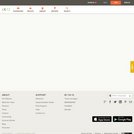
This short video and interactive assessment activity is designed to teach fifth graders about converting centimeters to millimeters with decimals.
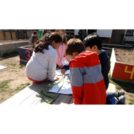
In this lesson, students will measure spaces in the outdoor classroom in metric units recorded as decimals and compare the measurements.
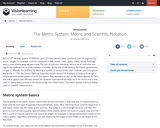
This lesson describes the history and basic operation of the metric system as well as scientific notation. The simplicity of the metric system stems from the fact that there is only one unit of measurement (or base unit) for each type of quantity measured (length, weight, etc.).
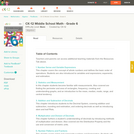
Provides teaching tips, information on common errors, differentiated instruction, enrichment, and problem solving for teachers to use with the CK-12 Middle School Math - Grade 6, Student Edition.
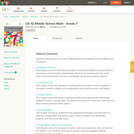
A work in progress, CK-12's Math 7 explores foundational math concepts that will prepare students for Algebra and more advanced subjects. Material includes decimals, fractions, exponents, integers, percents, inequalities, and some basic geometry.
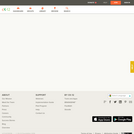
This short video and interactive assessment activity is designed to teach fifth graders about multiplying and dividing decimals - word problems.

In Monster School Bus, students play a newly hired bus driver with a certain number of seats on the bus. The mission: to pick up each neighborhood’s little monsters and bring them to school – without dividing up groups (monsters don’t like that).
In early levels, each little monster takes up one seat and players combine integers to add up to 10. Each new neighborhood exposes learners to a more complex set of numbers, including decimals and fractions. The design of characters and locations gives the game an edgy look, and provides a more mature atmosphere to a game covering fairly juvenile content (e.g., buildings transform into punk Monster Buildings as a reward for picking up kids). This is important: though students learn this concept of number chunking in earlier grades, they often fail to understand it conceptually. Therefore, this content could turn off older students if they feel the game is “below them.” The edgy character design helps make the content feel more age-appropriate, and the graphical details impact gameplay and motivate players to visualize numbers as sets and quantities and think harder about relationships among numbers and number systems.

This short video and interactive assessment activity is designed to give fifth graders an overview of decimal word problems.